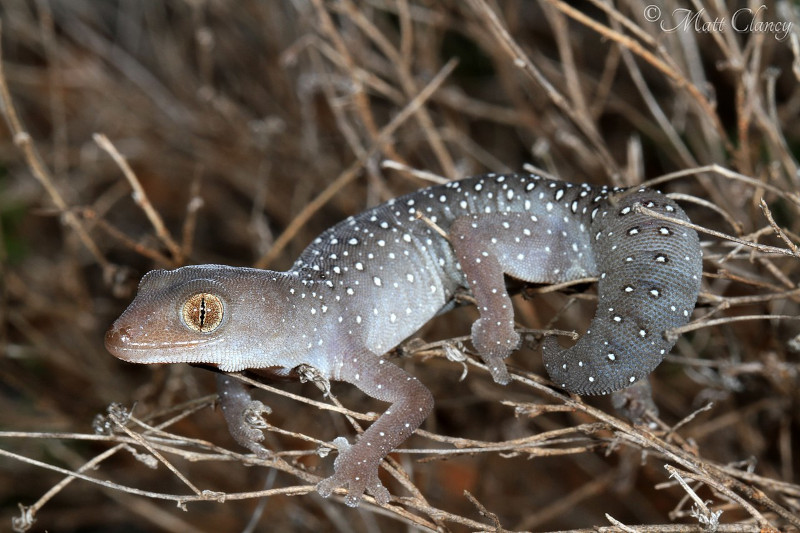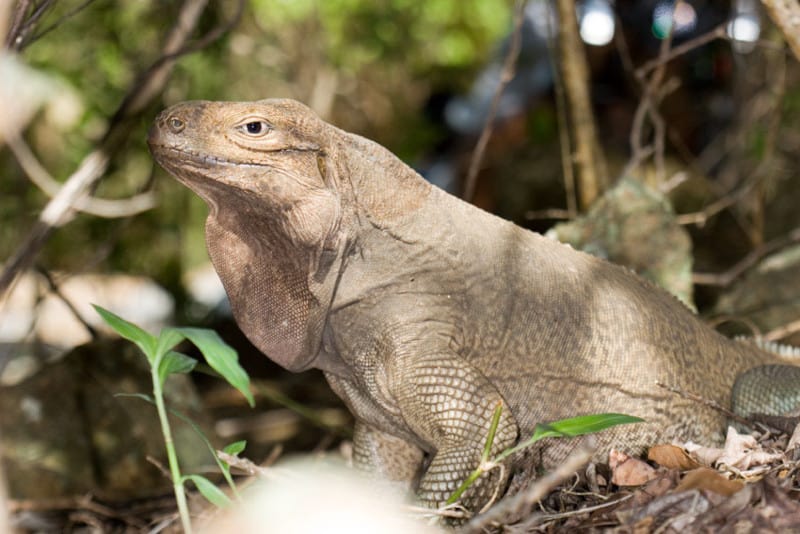
Jewelled Gecko Facts
- This startling creation of time and natural evolution most frequently goes by the appropriate common name of the Jewelled Gecko. It does have at least one other broadly accepted general title, though. That’s the simple term of green gecko.
- Inside the scientific community, though, it’s perhaps slightly better known by its technical moniker. Regrettably, however, that’s a moderately difficult one for the layperson to pronounce. That’s because it holds the formal epithet Naultinus gemmeus.
- The reptile received that appellation due to the efforts of Yule Mervyn Charles McCann. Born in India, the British naturalist accomplished the first recognition of it as a separate and distinct species. He managed that scientifically noteworthy deed in 1955.
- Unfortunately, the remarkable Jewelled Gecko appears to be declining rapidly in numbers. This most unpleasant trend also seems to now extend throughout the entirety of its native range. The IUCN therefore now lists the creature as Endangered.
- The animal faces multiple threats to its continued existence as a species. Like most forms of life on this plant, the majority of those stem from the actions of man. These include such factors as the related perils of habitat loss and ongoing climate change.
Related Articles




Jewelled Gecko Physical Description
In the dazzling Jewelled Gecko, Nature formed a remarkably eye-catching reptile that generally does exactly that. Yet, the marvel typically does so for its visual appeal alone. That’s due to the fact that evolution packed all this splendor into a relatively small package.
Like many species found around the world, this amazing reptile exhibits a certain degree of the physiological characteristic known as sexual dimorphism. In the case of this specific animal, though, those gender-based differences remain comparatively minor.
Overall, individuals of both sexes attain approximately the same physical dimensions. The body of the lizard reaches an average length of just 2.4 – 3.1 in (6 – 8 cm). The tail usually exceeds this on its own, with the total length measuring a known maximum of 7.1 in (18 cm).
Given these measurements, it’s understandable that the animal also masses very light. In fact, a mean weight only equals about 0.53 oz (15 gms), regardless of gender. Though exceptional examples in this regard naturally exist, few exceed this by any great amount.
It’s in appearance, though, that the sexes of the Jewelled Gecko distinguish themselves. For both, the background consists of an olive to bright green color. The underside of the body typically presents as either a gray or pale greenish yellow, sometimes with stripes.
On the upper body, the females most often display a jewelled pattern. These features usually develop in a diamond-shaped pattern. Colors within them typically include yellow, pale green, or even white. Each is also often outlined in either dark brown or black.
Males of the species, however, more commonly present a very different pattern. For them, that is generally comprised of several stripes extending along the length of the body. Some males, though, extend the differences even further, manifesting no stripes at all.
- Kingdom: Animalia
- Phylum: Chordata
- Class: Reptilia
- Order: Squamata
- Family: Diplodactylidae
- Genus: Naultinus
- Species: N. gemmeus

Jewelled Gecko Distribution, Habitat, and Ecology
Sadly, the wonderful Jewelled Gecko evolved as endemic to an extremely small section of the surface of the earth. Where that tiny zone of habitation lies, however, likely won’t startle many of you. That’s because it developed as native to part of New Zealand.
Yet, even within this already small range, the creature only appears in a select region. This consists solely of a tiny portion of the southeast section of South Island. Currently, no evidence exists that this marvel of Nature ever lived anywhere beyond this habitat range.
Fortunately for it, the small reptile displays a high degree of flexibility regarding its choice of natural habitat. This evolutionary trait allows it to, at least, maximize its possibilities inside of its restricted range. Nature usually provides for its many varied creations.
The ecosystems in which it commonly resides include such types as drylands, shrublands, and woody regions, like forests. It also frequents areas rich in rocky outcrops and boulder fields. Though occasionally seen in other settings as well, it appears to favor these.
The brilliant Jewelled Gecko also developed as both arboreal and diurnal in nature. Therefore being primarily active during the day, it spends the majority of its time in the trees, and sometimes shrubs. It further seems to favor beech, matagouri, and manuka.
Like its many relatives, it’s omnivorous in its dietary needs. The animal mostly feeds on local insects and plants. Moths and flies make up most of its fauna prey. Its preferred flora seems to be several types of berries. Its own predators include birds and possums, among others.
Species Sharing Its Range



Check out our other articles on 5 Beautiful Black Sea Species, Marbled Polecat, Mississippi River, Chinese Giant Salamander, Sicilian Fir, Knysna Seahorse, East African Lowland Honey Bee









Leave a Reply